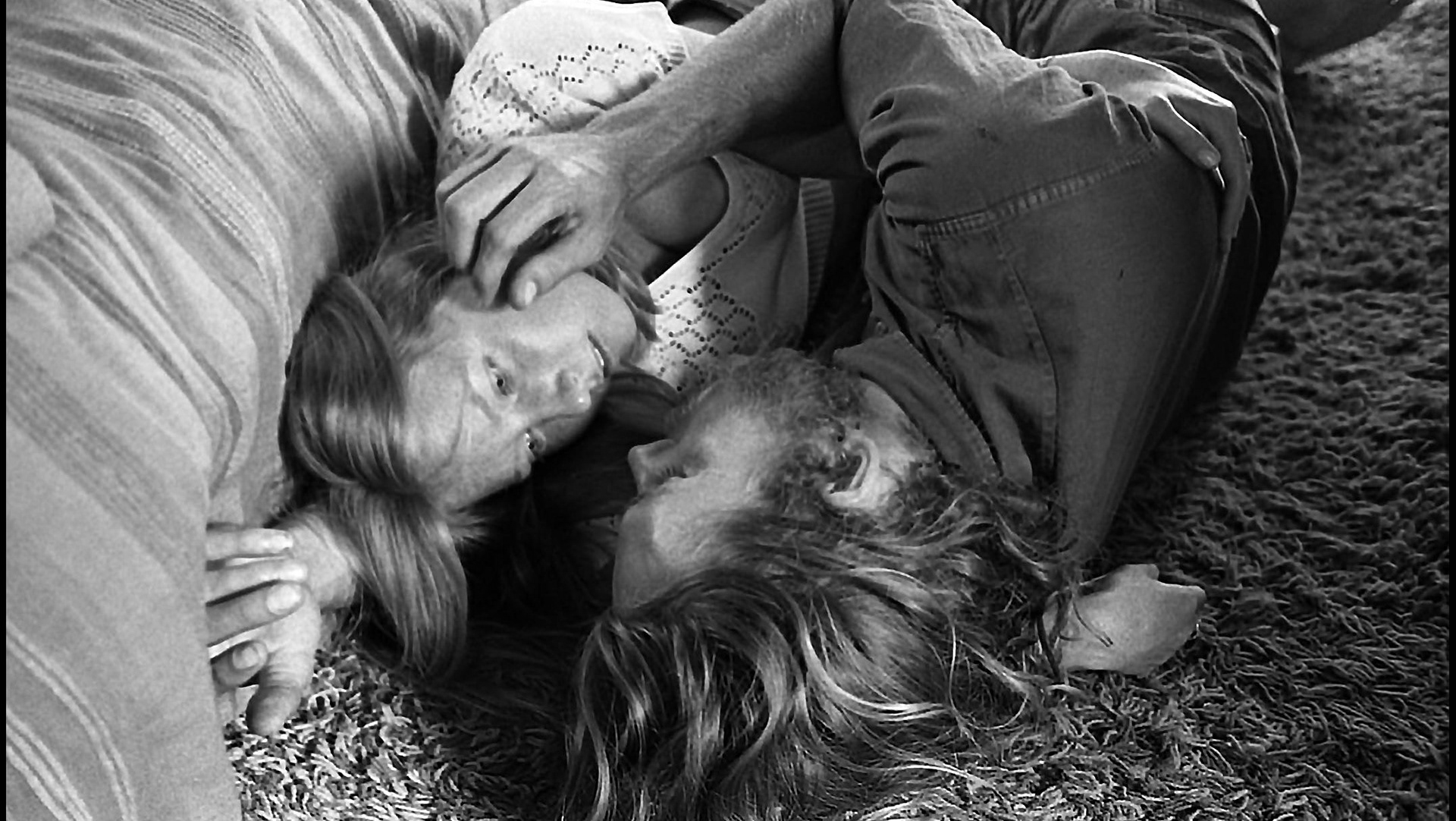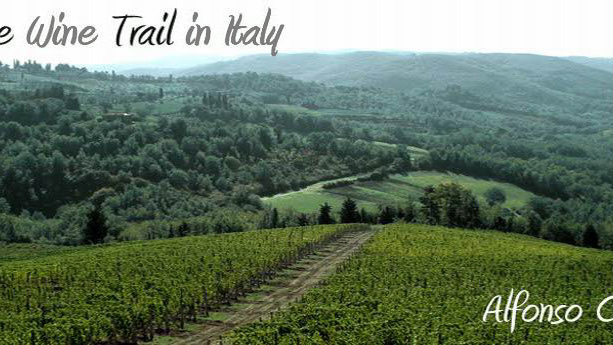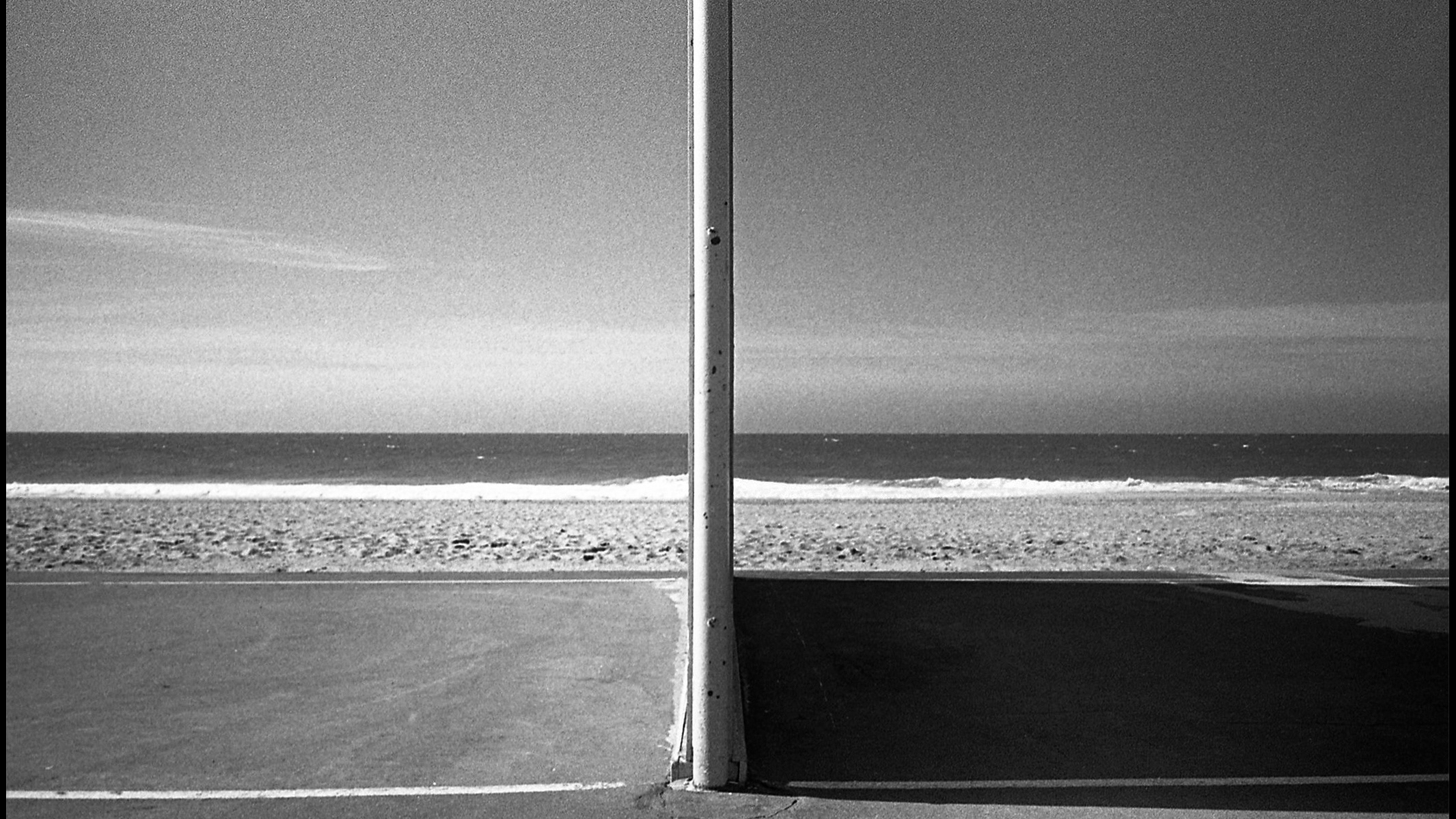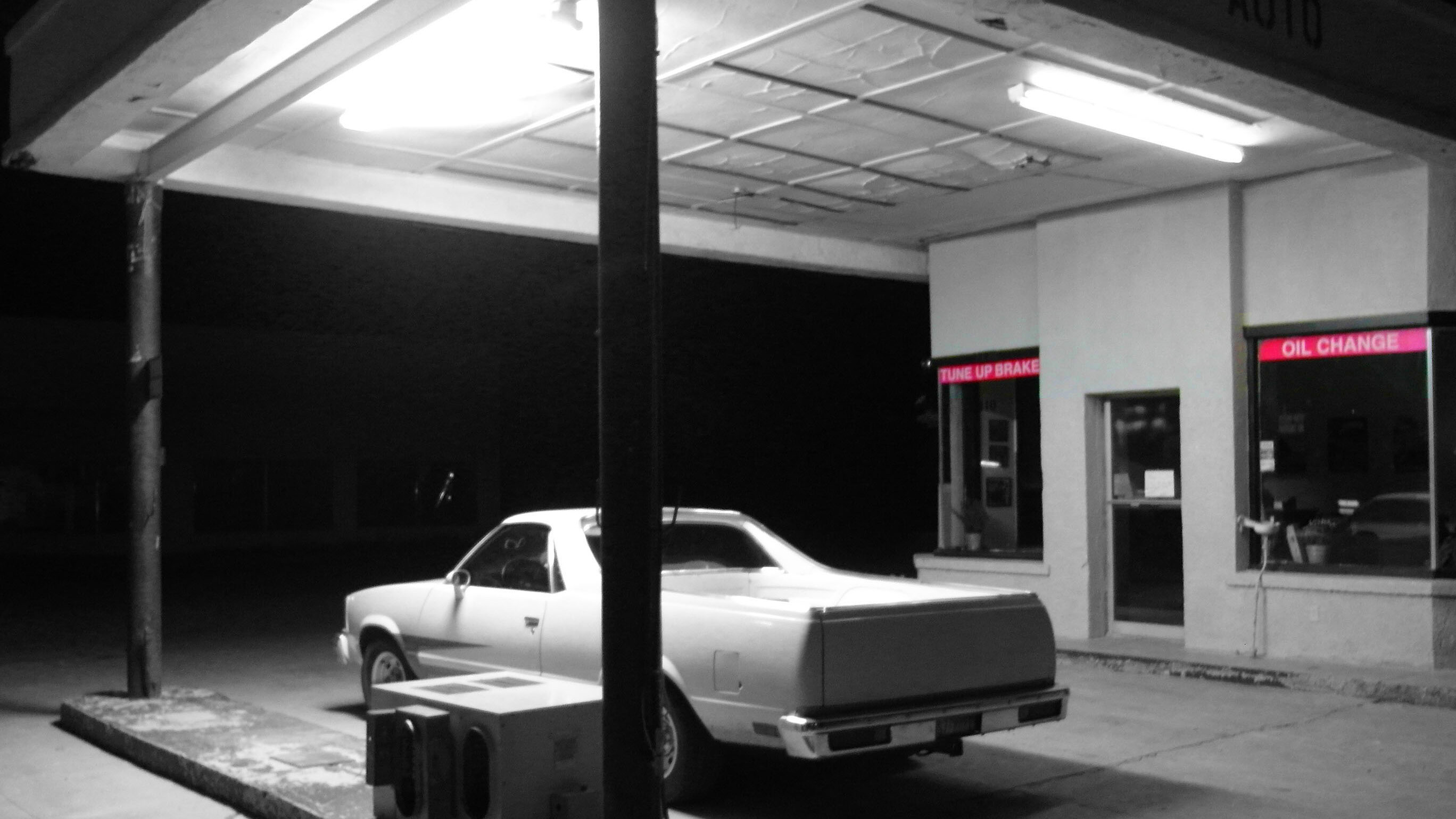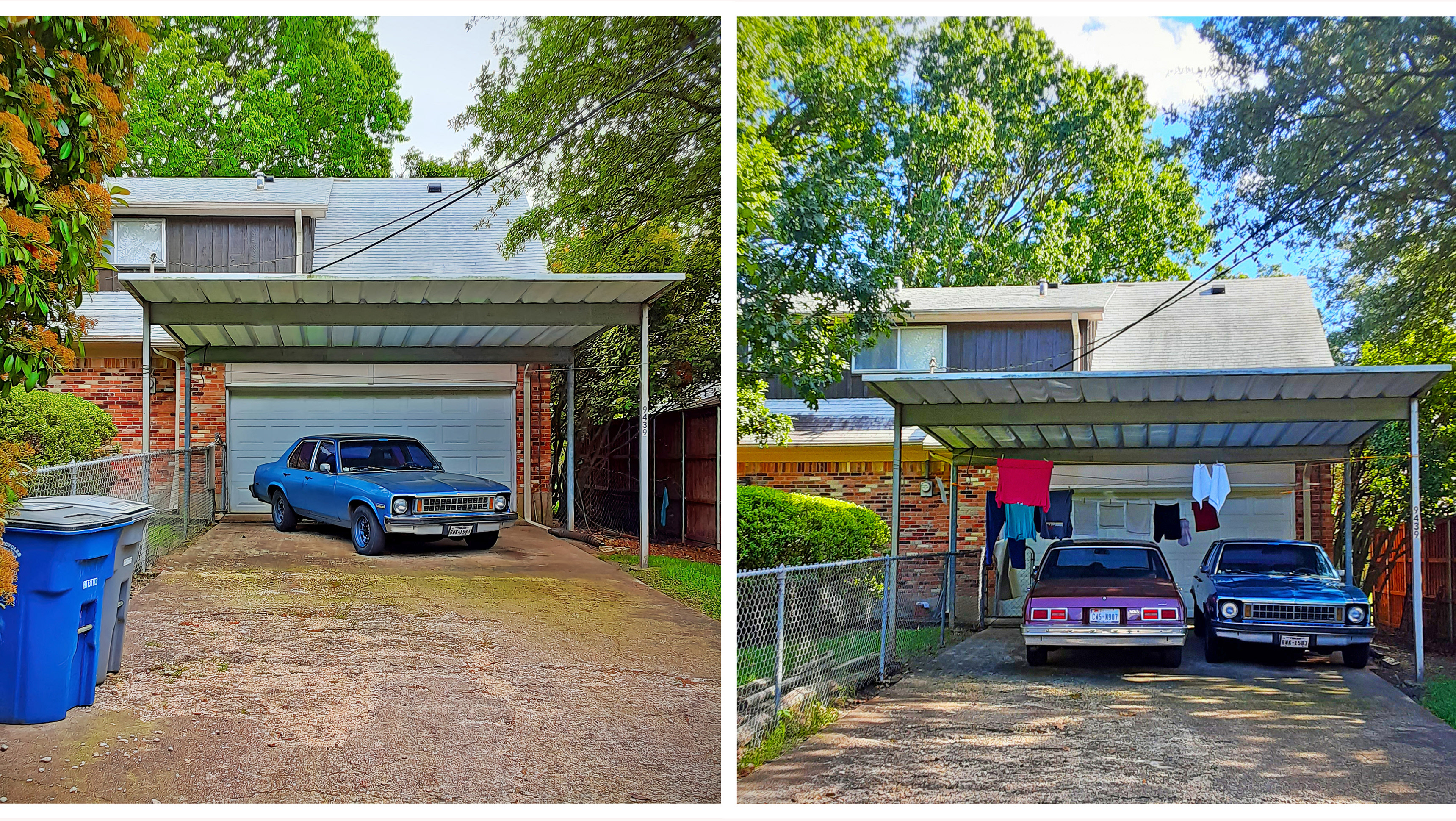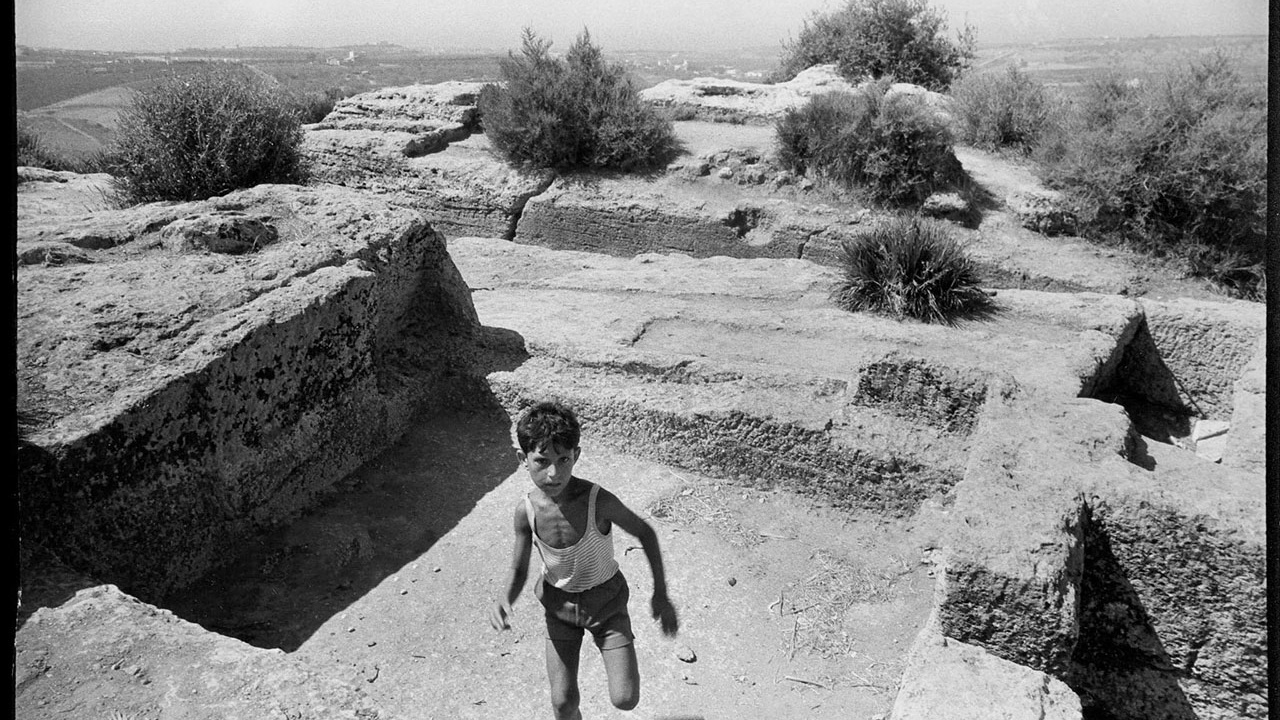Autoritratto "Leaning in" – Giudecca island, Venice
Selfies are the big thing these days, and it looks like we will have to suffer through a few more years of that affectation. But for years, artists have been self-reflecting in their works. While this shot borders heavily on cliché, for I have seen this image taken in this spot several times, for some reason I kept going back to it, leaning into the picture. And here is what I came up with.
This was my 60th trip to Italy in 50 years. That’s a lot of traveling. But my relationship to Italy can pretty much be summed up in this shot – this is what I do in Italy – this is who I am. I am an observer. And a very grateful one at that.
Day one of photo workshop with @marcdetollenaere - basic blocking and tackling. In this shot, we set it up and waited for something to happen, for a story to be told. Within a few minutes an elderly man walked across the picture with an entourage of pigeons. They simply followed him, Pied Piper-like, across the space. A scene that could have happened in 2023, or, 1723.
"Getting closer" - more towards a thematic series with this shot. The series, "Stalking the stalker," takes place the rest of my life, in which I endeavour to spot the one who is coming for me, for all of us. Odd, in that this one, the actual person represented here, was a healer, not a reaper.
Made at the Ponte de L'Anatomia, a seldom seen 'double-barreled' sotoportego, this was an exercise in split imagery. In this case, as well, I was looking for what was looking for me. Part of my “stalking the stalker” series I am working on.
Another shot, this time, more reflective and dreamy. After three years, I had hoped that we people in the world would see that our world was stopped in its tracks, and we had a moment to reflect and think about what our world would be, could be, when it was re-started. Silly me, most of us just went back to reclaim the old scripts and carry on from there. Little or no lessons learned, little or no revelations. Just a desire to rush back into the life that was taken from us to try and make up for time lost. But some of us remain trapped in our little bubbles.
So often, photography is, for me, about time travel. Here we are on a bridge in Venice, and up pops a vision from 1970? I did a double-take, and grabbed a quick “safe shot” of this woman who could have been in this same exact spot, wearing the same outfit, fifty years ago. With one exception. And we all know what that is, the ubiquitous ear and eye and mouthpiece of the 21st century thanks to Steve Jobs. Going to college in Silicon Valley in California, I had a teacher who impressed upon me, often, that change was coming, and at a pace the world had never seen. Fast and furious, it did, and with it, the technology to be able to pull something out of your pocket, or your purse, and make a visual note. We used to covet our spy cameras, our Minox and Minolta’s, our baby cameras, our half frame Olympus Pen F’s, but now the playing field has been redrawn. And there she was, in living Black and White, exhibiting that even though it may look like the ’70's, we were indeed deep in the 21st century – 2023 to be exact.
Revisiting the scene of the crime – Attentive watchers might recognize this bridge in Venice. It was where I made the time travel picture (previous shot). However, there was a lesson at this spot, which has the Ponte Molin de la Racheta, a relatively newer bridge (1901) for Venice. For one, making sense of the lines, the diagonals, the lighting, the contrast, the colors (vivid) and trying to find a scene which evokes some kind of emotion. Again, a virtually empty and abandoned Venice. Why is the pedestrian holding his backpack out in front of him? Is it laden with something dangerous? Is he meeting the mysterious time traveler woman at the top of the bridge? Maybe a handoff?
I do like the shades of grey in this image and while it is not an “heraldic” photographic, in that it is not one for the ages, I think it is simple, peaceful and at the same time just a little off-putting. Everything is just off a degree or two, here and there. So, let’s not start popping the Champagne quite yet and declaring “mission accomplished.”
Behind the church that Tintoretto used to attend, in Cannaregio, there is a venerable foundry. Down a little passage, past a campo, turn right, then left, past the studio of two crazy artists who are encamped, much to the dismay of the landlord, who could get much more rent. But it is Italy, and artisans and other humans are protected from greed and capricious intent. Further down, closer to the canal, is the foundry. It is a ramshackle looking place, but inside, it is busy. Busier than the few folks remaining who toil and labor over the heat and the chemicals and the materials, most of which probably do not help a human in the longevity department.
Stooped over a bronze cast, is one of the artisans, brought back out of retirement after the apprentice left for brighter shores. Nearing eighty, and a few inches shorter than he was at the zenith of his work life, he fixes his intense gaze upon the possibility of perfection. This is Italy in a nutshell.
He looks like he’s flouring chicken readying it for the frypan, and somewhere in Italy that is probably also happening with equal fervor. But what we have here is something for the gondola, a heraldic symbol, a continuation of tradition, the lifeblood of Venice.
This - people – is what makes Italy great. This creative fury, this race against the inevitable, but the race nonetheless. You cannot see this in a queue in St. Marks square, waiting to file into the Doges palace with other day trippers. This is the real Italy. It’s still there. But it’s far from still. It is life, brimming over the top.
Paolo Zanon and his brother Francesco joined their father at a very early age (pre-teen) as blacksmiths and have been working now for seven decades. No children and very difficult to find apprentices in Venice to carry on with their work. Known as “the blacksmiths of Carlo Scarpa” who was a famous Italian architect known for his work in Venice. Nowadays, Paolo and Francesco, who live close to their workshop in the Cannaregio district of Venice, are racing against time, restoring and finishing projects, many initiated by Scarpa. What you see isn’t a man who is sad or down. But he does know that he will not win the race against time, and time and materials take a huge toll for a blacksmith. It is not an easy life, on your feet 10-12 hours a day, six days a week. Vacation? Forget about it. The backlog of work stretches back years, more than the two brothers have in reality. And who will forge on ahead when they are called away from this life? Talk about legacy – they don’t have time to think about it – there is too much to do, too much to finish. And not enough time in the day to get it all done, and then to get enough rest to get back at it, in the remaining days.
Nothing is straight. Again, this time, it isn’t me who is off 2-3 degrees. It’s the way of the world. The challenge here was to frame it so it didn’t look out of balance but to take into account the irregularity of the terrain. This was made on the Fondamenta S. Girolamo in Cannaregio. The fondamenta are devices in Venice to shore up areas for walking and for structure, or foundation. Venice without fondamenta would be most difficult. And in this case, even with a slight pitch, the pedestrian in Venice can get from one patch of earth to another, via bridges and the grace of God.
Reflection study – I really struggled with this photograph. In the first place, the color one was interesting, but I thought the color distracted from the graphic message I was looking to convey. I then worked on the B&W version and tried to go light, so light to almost wash out the images and merge them into one. But I didn’t like the finished product. I am stuck here in a higher contrast mode with a horizontal grain filter. I like the striations and the back and forth between the two reflections. I also like that the overall shot is interrupted in places with other images, as if competing to tell their story. Anyway, this is where I landed today on my Venetian journey.
Some times a normal, run of the mill image can take on another life, depending on the light and the contrast. In this case, a “tourist” shot, nothing special is going on here. People are peering over a bridge, in the far right bottom another couple (concealed) is looking at a map. Nothing to see here? But the diagonals, the clouds, the graphic design screamed at me in post-production.
One of my first rips to Italy, when I was 20 and traveling solo, I would wander the streets of Rome looking for the world de Chirico depicted in his metaphysical paintings. I found them, and de Chirico himself. It was life altering, for a young art student. But as with all teachers, the lessons are the journey.
As well, W. Eugene Smith, who loved higher contrast in his documentary photographs, influenced me at an early age. But I knew I was neither of these gifted artists.
Hundreds of miles away, and half a century later, they are gone, and I am farther down the road. And this image was there, waiting for my eye to see it and my index finger to capture it.
One of my first rips to Italy, when I was 20 and traveling solo, I would wander the streets of Rome looking for the world de Chirico depicted in his metaphysical paintings. I found them, and de Chirico himself. It was life altering, for a young art student. But as with all teachers, the lessons are the journey.
As well, W. Eugene Smith, who loved higher contrast in his documentary photographs, influenced me at an early age. But I knew I was neither of these gifted artists.
Hundreds of miles away, and half a century later, they are gone, and I am farther down the road. And this image was there, waiting for my eye to see it and my index finger to capture it.
Once in awhile a picture arises out of the multitudes of images snapped, grabbed or made. This one was there in all its latency, but it coaxed itself into existence. Why, one may ask? For one, this isn’t an image I was looking for. But apparently it was looking for me. Which is unusual, or maybe not so unusual, depending on one’s orientation. Kim Pierce writes in her novel, My Dead True Love (https://mydeadtruelove.com/), “How can you be here one minute and not the next?”
When my wife Lizanne was alive we went to Venice. She liked to say, “He took me to lunch in Venice.” And yes, I did. We were on our way to Friuli and I thought a nice lunch and a leisurely stroll, in June nonetheless with a million other visitors, would be fun. And it was. But I thought, in days ahead, that she might have wanted to spend a little more time there. I know she wanted that.
And now? Now, she, like all those who have gone before us, can wander at will, appear or disappear, however she wants to. Be here one minute and not the next.
Sometimes, what one doesn’t see in a photograph can be as compelling as what one does see in one. And with this image, that is exactly what obliged me to make it in this way. Photographers sometimes spend a lot of time making sure every detail is sharp, everything emanates from Zone 5 - towards darkness or towards the light. But what if there were other forces at work? Forces such as pure design? Emotion? A dream that is captured in a photograph?
One of my favorite writers is Lawrence Durrell. I scarfed up everything he wrote, from his first novel, The Black Book, to his magnum opus, The Alexandria Quartet, to his speculative fiction novels, to his travel books. And one of the concepts I learned from reading Durrell was the notion of the heraldic.
And while this photography isn’t necessarily heraldic, it does herald into my visual world the suggestion that a photograph takes on a life of its own, independent of the image makers intent.
This photograph presents me with that proposition. Or as another Lawrence, David Herbert Lawrence, once wrote, “We are transmitters.”
When I turned 60, people in the know told me that I would become invisible. I had to laugh, I would tell them, for I learned how to do that on the streets of Palermo when I was 20. There’s a lot of chatter about one’s place in the world, with lots of folks, some rightfully, arguing over their need for greater visibility. As for me, I practiced to get here. I have absolutely no problem with not being seen. It is my job to be the seer, and I don’t mean that in some mystical, pie-in-the-sky way. It’s just that as a photographer, one must blend in, in order to let the scene unfold. Life, the daily comings and goings of the hominids, here in one of the busiest passages in Italy, and the world. Blissfully invisible and nattily attired.
The American photographer Aaron Siskind had an influence upon me in my art school days, for his eye was finely attuned to graphic design in everyday, commonplace things. I have a fascination with clotheslines, in fact we have one in our yard, and thus I study the lines and the pins often, when I am putting clothes out in the sunshine. This has been a cool spring and it is a pleasure to stand outside and breathe fresh air that isn’t 100⁰ F. When I came upon this clothesline in a courtyard in Venice, I was fascinated by the method by which the Italians put up their clothes on a system that comes up and down when needed. An economy of space. And the added bonus was that it created an intriguing graphic puzzle. The things one finds when one gives in and just wanders!
In keeping with my latest Venetian thread, the lesson here was to try and balance the light with the dark and the geometric shapes, to make an interesting final product. This image looks good large on a wall. It has diagonals, rounds, rectangles, squares, regular and oblique, and it has vertical and horizontal lines. A relatively new building for Venice (mid to late 20th century) and is clustered around an area of contemporary architecture. Once a factory, producing watches (Junghans) and then during WWII, bombs and fuses, today it houses a theatre.
There is so much that is old and ancient in Italy. That is one of its charms. But Italians are not the kind of people to stand still. Who knows what people will think of this area in 200-300 years, if the Venetian lagoon survives the current climate crisis with their fixes in place.
But on this afternoon, what a compelling back lot for a neorealism film, or a noir thriller, eh?
“Architecture is inhabited sculpture.” – Constantin Brancusi
One of the lessons I learned in Venice was to re-imagine forms. To really look at the things in front of me, not just go about my daily comings and goings as if in some kind of a stupor. No easy task, for we all fall into a kind of routine when going about our day. This scene, for example, is something I’ve seen hundreds of times, in Italy, in France, Portugal, California, New York. Seriously. But somehow, looking at this in a chiaroscuro rendering makes way for the symmetry, the balance, those diagonals which take on a new expression of design. Are you still with me? Here on these portals, so many of us are obsessed with what we ate, who we ate with, what we drank, what we looked like, who we were with. Here the scene is empty of all that. All of the people in the picture are under stone monuments in the ground, for this being Venice, and space being at a premium, the inside of the abbey courtyard, the perimeter, is a burial place. So, the rich and the famous at the time, with the rare exceptions, inhabit the space below. The arches, the trees, the light, the statue, all frame this somber place. There is no talking inside here. There is only looking and praying, for the souls surrounding this court and beyond.
The Gondola is analogous to life in Venice. Romantic, practical, and an object of beauty. On the Giudecca islands there is a gondola workshop, and the work goes slowly and steadily, over years. During Covid, the work continued, even though tourism ceased and the future was uncertain. But the life of a gondola is about 40 years, so they must be replaced, eventually. Just like wine salespeople.
We all think, because we were once shiny and new, that it will always be that way. My mom once told me, when she was young, that was all she knew. “I’d been young all my life, what else did I know?” And so it is with all of us. And then the boat starts to leak and tilt and a piece of wood rots and a fitting gets rusty. And they restore the boat, and repaint it and put her back in the water. But eventually, well you know the story.
I shot this photo knowing it had probably been shot a thousand times before. But I was working on composition and on trying to figure out how to make the image not look too crooked. Good luck with that!
I also diverged from straight black and white to just a little tinge of sepia, to add a nostalgic touch to it. this is what the image called out to me. This photo could have been made as easily in 1963 as it was in 2023.
I love the light in this shot. Tourists don’t go here. This was a privilege and a pleasure to walk inside a gondola factory.
Everything about this photograph is a mess. It’s like a room that has not been made up, but none the less it all makes sense. Nothing is straight, everything is bent. Except for the pole the man is carrying. The water is especially mesmerizing, and even more so in color, which would make this photograph even more of a cliché. Still, a valuable teaching moment. To still oneself and find a way to make the image in front of the lens make sense to the viewer.
One note from my teacher, Marc. The sculptural relief on the right side of the building on the house across the canal: the story goes that it once was the house of a Turkish merchant. Hence the turban that the man in stone is wearing, to symbolize his Ottoman (and often, Islamic) affiliation.
It takes all kinds, and they’re all here, in Venice.
A brief diversion – this time the picture isn’t the story – the moment is. Memorial Day weekend in America. Where we are supposed to remember those who went before us in battle. But what about the daily battles we all undergo? What about the three-year battle my wife Lizanne fought, just to do everyday things like brush her teeth and feed herself? No, the MS wouldn’t let her.
And what about the battles my mom had to deal with as a young child in Dallas, when her immigrant mom, who couldn’t speak English and had five children and a was abandoned by her husband, my grandfather, and she had to let go of my mom and her sister for a few years to an orphanage in Oak Cliff?
Last night I sat outside in a yard in Oak Cliff, not far from that orphanage, among a group of similar aged friends (OK, Boomers) drinking Venetian Spritz and Tequila, not together. We all talked about things in our lives and remembered.
This morning I remember those who mattered in my life, not in some distant war. Bless them and their memory. Amen.
Wow, this one really gives me vertigo. There is nary a straight vertical or horizontal line, which really challenges the Western World’s notion of the right angle as an element of composition and balance. The city is sinking, yes, we know that. And the tides are rising, again we are aware. Nonetheless, this picture makes sense. It is in balance, as the eye (and the brain) deem it so, in order for the viewer not to go stark raving mad. But if you really crawl into the rabbit hole that this photograph is, it can be a pit from which you will emerge a bit unscathed. Be careful.
Yes, the assignment was in B&W. But the artist Piergiorgio Brusegan has lived such a colorful life, I felt compelled to work on a hybrid image. This is the artist in his studio in Venice. He’s lived such a rich and varied life. Anyway, something I’m working on, not finished by any means. Just a sneak peek.
Curtain call – early one morning I was on a boat to one of the islands in the Venetian lagoon. Along the way, we passed the Isola di San Michele, once upon a time a prison, and now a cemetery for Venice. What are those souls, now buried on that island doing now? Well, unless you are a medium or have psychic connections to Stravinsky or Diaghilev, or any number of famous or rich or powerful or just plain folk, who is to know? Are they taking their curtain call, now that their play is done?
Meanwhile, over on this side, I observe, as I am prone to do. Watching and waiting.
Right now, I am looking at a little being, one of our furry family members, who, it appears, is getting ready to cross over. A sweet, sweet creature, whom we love a lot. Is she getting ready to get on the boat to take her to the island? Time will tell, as it will for all of us, when the curtain falls.
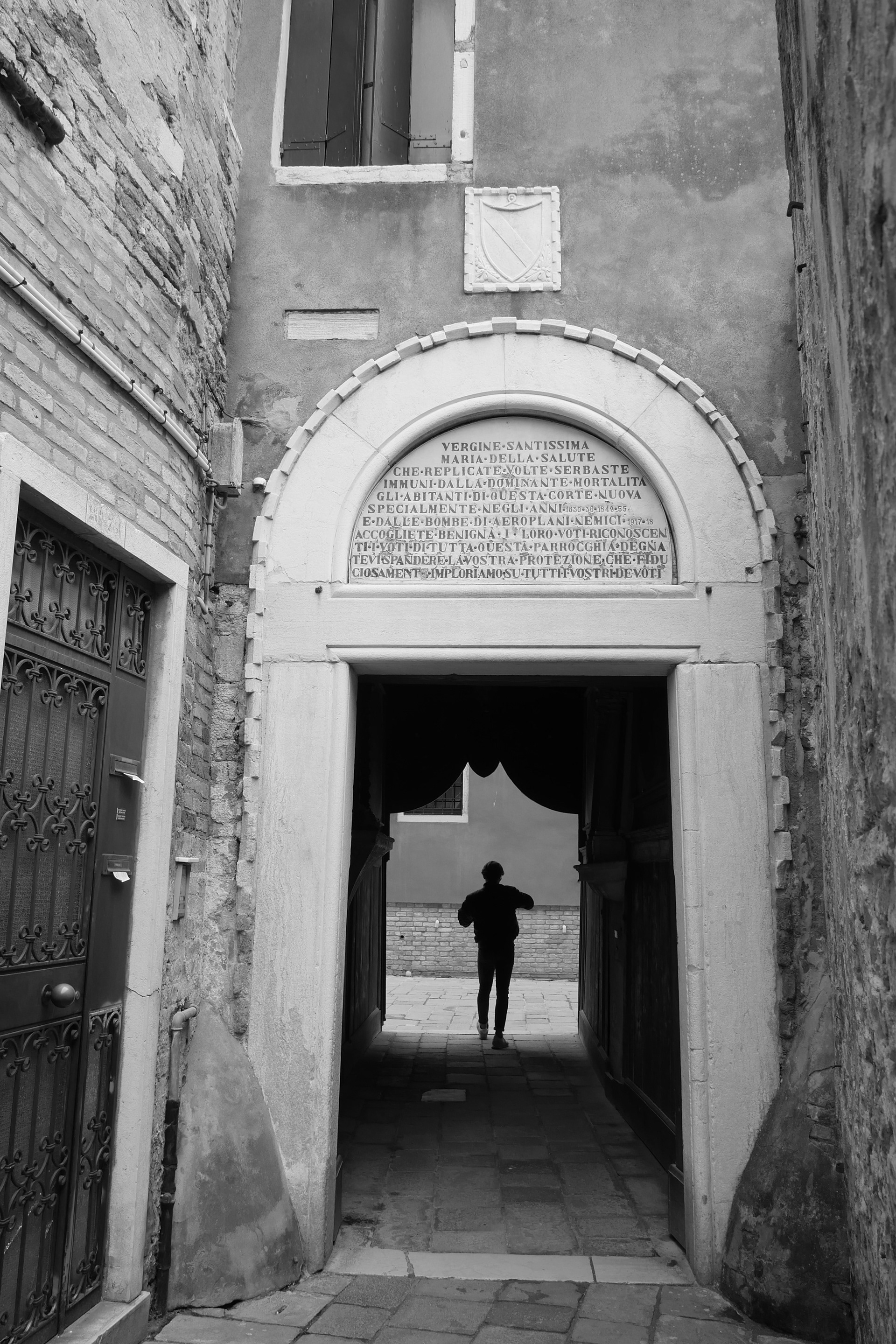
First shot
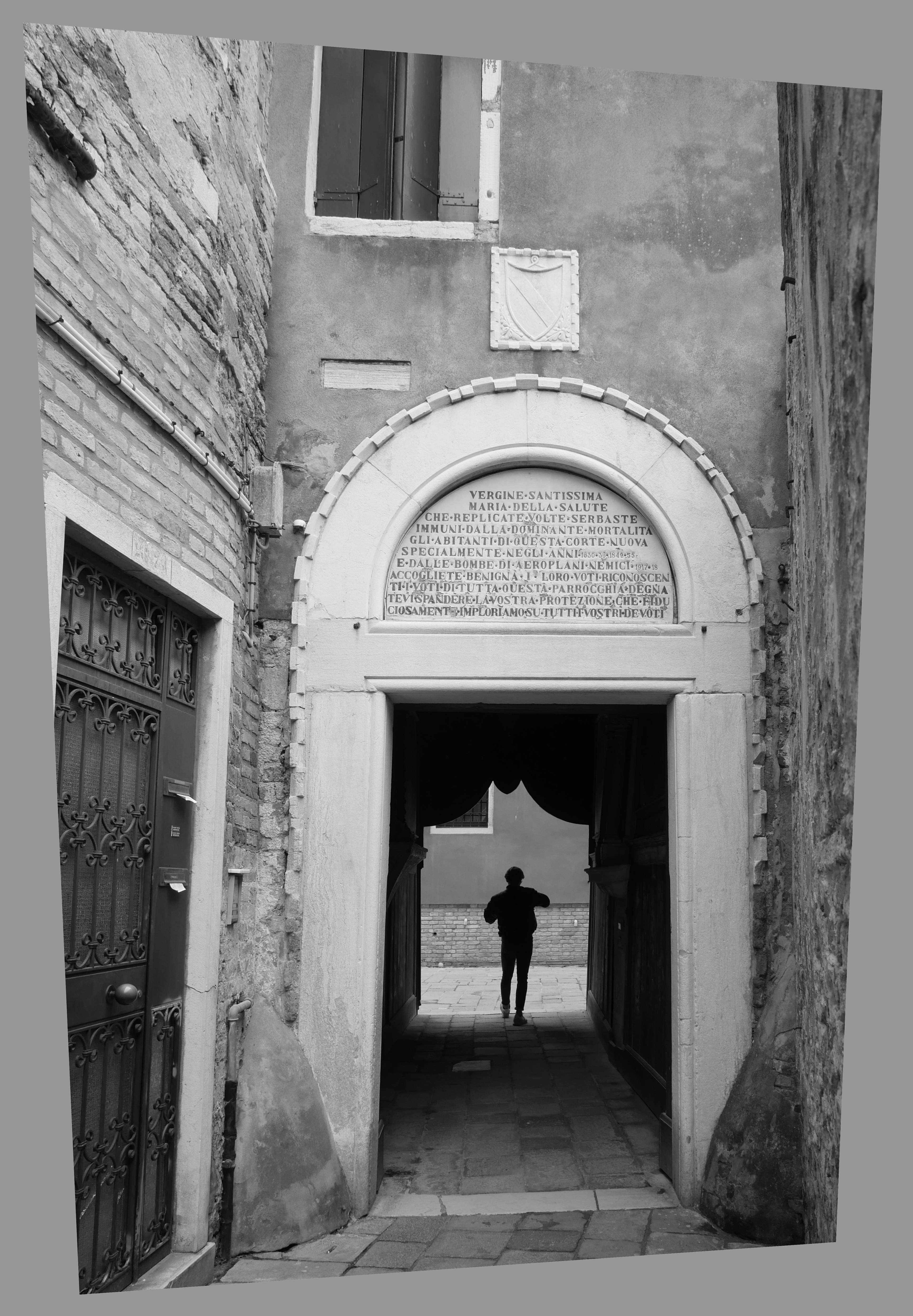
Lab analysis
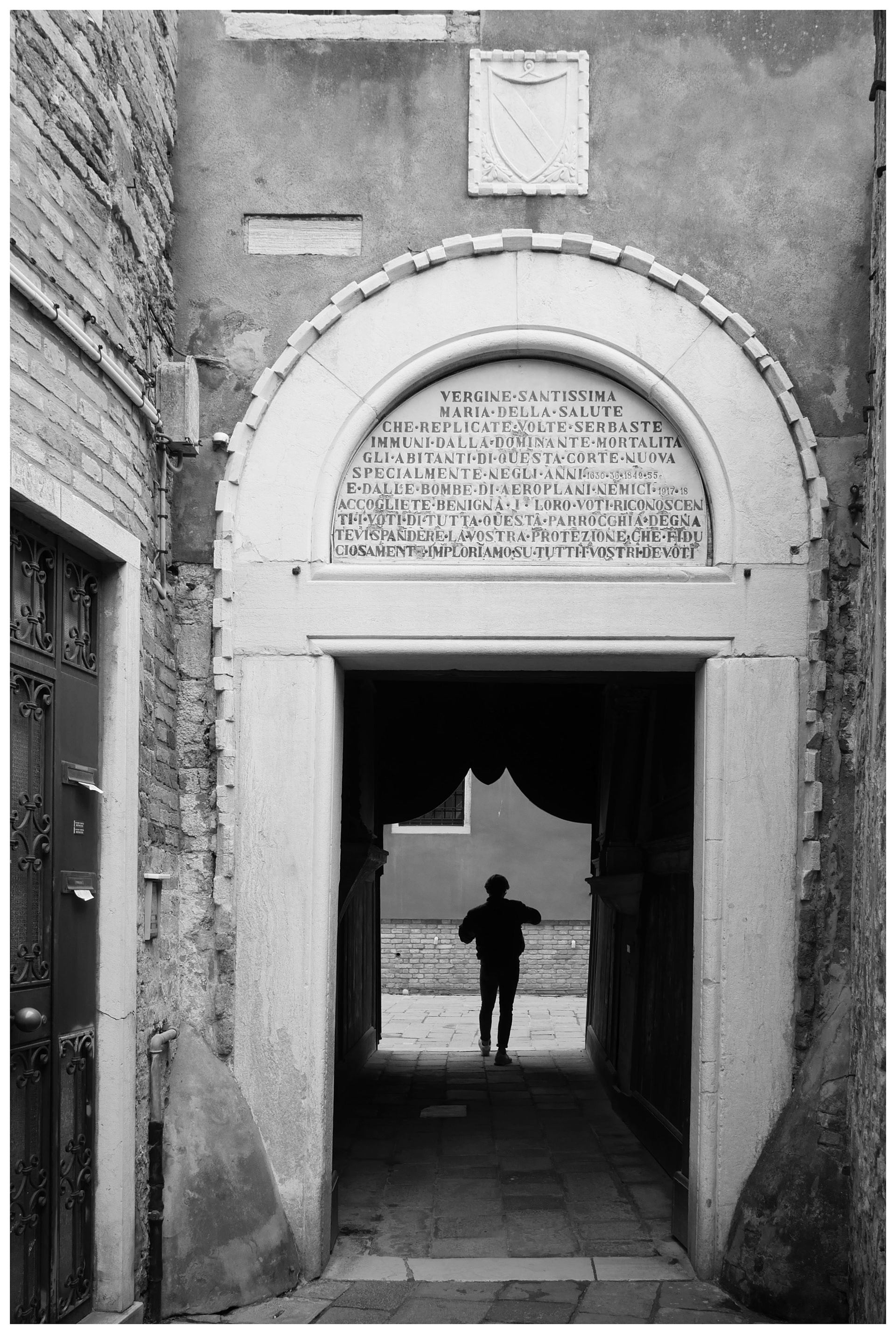
Final image
“Teachable Moments” – this image posed several challenges, not the least the renown of the spot. Let’s start with that story and then talk about the technical challenge.
The bad luck stone - In the Castello district, between the Corte Nova and the Calle Zorze there is a covered walkway, as seen in the photo. And there is a stone on the ground which shows no sign of wear, like all the other stones surrounding it. That is because people who know, Venetians, do not step on that stone as it is considered a superstition and bad luck to touch it. Even delivery persons go around the stone with their large parcels and wagons. The stone signifies where the black plague stopped and in doing so, the inhabitants of the area were spared an untimely death. Likewise in later years, during WWI, aerial bombing by of Venice the Austrians spared this area.
Now, the technical: Nothing is straight, after 500 years, on a little island that was made in swamp and marsh land. Nothing. So, this photo will look off kilter with even the most dedicated view camera photographer with all the tools to enable him or her to straighten out things, so the human eye won’t go crazy. The following three photographs reveal my process of trying to make sense of the shot. I don’t know if the final product is at all helpful, except to someone like me, who saw the challenge in making a symmetrical shot from what I had been given to work with.
"Getting closer" - another one, more towards a thematic series with this shot. The series, "Stalking the stalker," takes place the rest of my life, in which I endeavour to spot the one who is coming for me, for all of us. Odd, in that this one, the actual person represented here, was a caregiver, not a reaper. But the reaper is sly and deceptive, and always catches their prey. Always.
I'm not quite sure, yet, why I am drawn to this image, but I am. Whether or not it will have a lasting effect on me, over time, is still out with the jury. But I do like the graphic nature of the shot, along with the double image (reflection) with the Giudecca Canal playing a supporting role.

